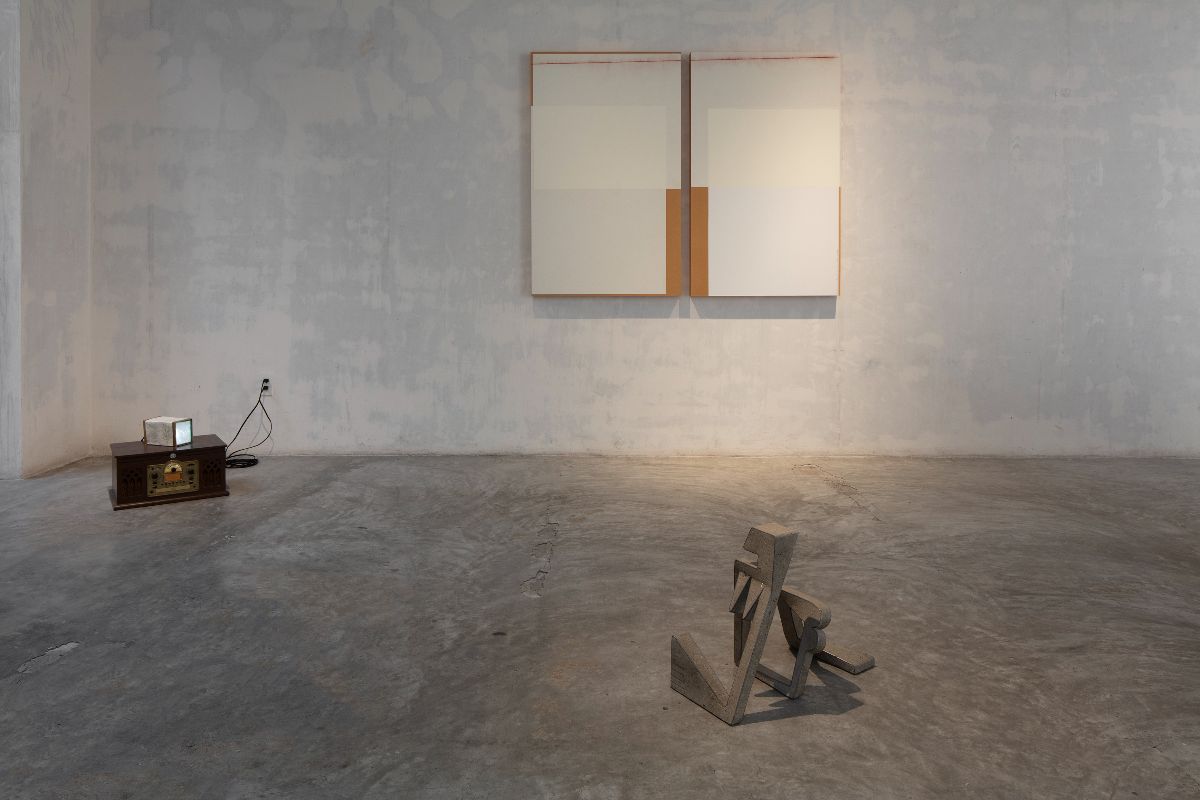
Olvidemos la modernidad, pero no su estilo
Curated by Rivera
Exhibition
-> Feb 7 2023 – Mar 18 2023
N.A.S.A.L.
N.A.S.A.L. presents the group exhibition Olvidemos la modernidad, pero no su estilo curated by Rivera.
Artists: Pedro Ramírez Vázquez, Rubén Gámez, Melanie Smith, Armando Salas Portugal, Tercerunquinto, Manuel Maples Arce, Carlos Martínez, Charlotte Glez, Urmeer & Vanebon, Andrea Carrillo, Mariana Ledesma, Teatro Ojo, Néstor Jiménez, Pedro Reyes, Carlos Lara
On May 8, 1923, the impudent voice of Celia Montalván sounded on the radio interpreting the hit La Borrachita, by Tata Nacho. This was the premiere of Mexican radio by El Universal Ilustrado Casa del Radio, for which there were speeches by its founder Raúl Azcárraga Vidaurreta and the director of the newspaper, Carlos Noriega Hope, and a concert from the station studios at Avenida Juárez 62 with stars like Manuel M. Ponce and Montalván herself. Mexican modernity is seen, felt and is present in the unusual technological innovations condemned to be perpetually futuristic, but also in the mess that the post-revolution created, in which morality, decency and normality went out of the window to welcome it - opening the two doors of a cantina - to impudence. This Mexican virtue empowers the union leader to enrich himself in an unexpected way and crystallizes the possibility of amour fou in a country that does everything to get rid of the old regime and its good customs. Not only was Mexican radio inaugurated on that day, but Manuel Maples Arce read his poem TSH dedicated to the radio with a strident expectation that in different cities like Monterrey, Guadalajara and Veracruz it could be heard perfectly, thanks to Wireless Telegraph. What was spoken and sung in the studio (on the property that would later become the Alameda Cinema) could be heard across Mexico. Rivera’s concerns about Mexican modernity are contained in his tentacled curatorship that reaches the abuse of mining in the Popocatépetl volcano in the 19th century… the tourist policies of the 1970´s (Magical Mexico!)… the radioactive gardens that arrived from the United States in 1950 to clear consciences about the good uses that radioactivity could have after the lesson of Hiroshima… the architectural genius at the service of an institutional revolutionary state… the problematization of the magueyes as a nationalist landscape element that from peaceful in nineteenth-century painting become combative warriors… massive acts in the chilanguisimo Azteca Stadium by Modernity, that have been put on a pedestal of El Museo de lo Mexicano, in which icons of national culture appear reproduced in the stands by grace of the coordinated community… line actions shared by construction workers and artists painters… Mexican science fiction embodied in sculptural props… the establishment of socialist education in Mexico… the auto parts maquila in Tijuana in the 1990´s and its repercussions on social, family, women’s and political life in the north of the country… the revenge of Los Pinos for the betrayal of one of the most important oil union representatives of the 20th century… the work uniforms from the panopticon of the foreman, or the modern sculptures of a contemporary artist. Rivera reminds us that without the avant garde, the monumental and the failure Mexican modernity, the guacamoleo of the 20th century that we now look at with fascination from the unprecedented 21st century cannot be understood.
Aldo Sánchez Ramírez